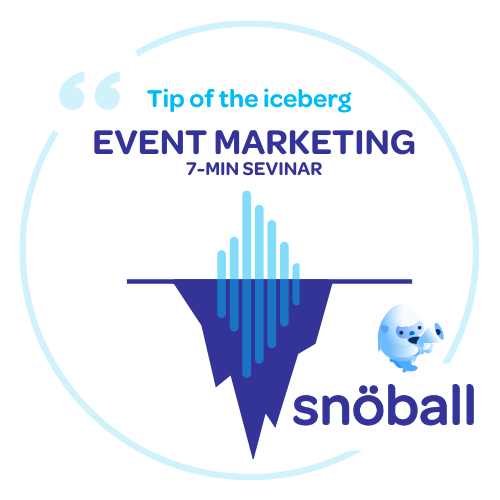Using Valuegraphics to Influence Attendee Behaviors and Drive Attendance
Move over age, gender, and job title (demographics) and past behavior (psychographics), there’s a new data set in town. Valuegraphics, or what people care about, can “influence and predict the behavior of people anywhere in the world,” according to consumer behavior expert David Allison. In this Event Marketing Sevinar, he and host Rachel Stephan, Snöball founder, talked about how to use valuegraphics to craft compelling messages that drive event attendance.
Know what your people care about
Social scientists, behavioral scientists, psychiatrists, and neurologists are among those who have studied the role values play in decision-making, and they have come to some conclusions. “Values are the only thing that matters when it comes to understanding how people live their lives,” Allison explains.
Knowing what people care about, (family, friends, purpose, wealth) “can get people to make the decisions we would like them to make.”
Allison built upon the decades-long scientific research with his own study. For his book, “We Are All the Same Age Now: Valuegraphics, The End of Demographic Stereotypes,” he and his team globally administered 750,000 long-form surveys resulting in an accurate assessment of the core values of people in 180 countries. As he sifted through data representing virtually the entire world, 56 values emerged. “These are the North Stars that every human on the planet is pointing to,” he says.
Distinguish values from country to country
However, Allison explains, “in every profile we’ve ever done for a client, from B2B to B2C, high tech, philanthropy, rich people, poor people, it doesn’t matter, there is always some kind of representation of five values.” He calls them the “togetherness cluster,” which includes values like family, relationships, community, and belonging. “It’s why the events industry is so important.”
Complete demographics and psychographics with valuegraphics
While demographics and psychographics are important, valuegraphics are more effective. Using only demographics to market to a specific group, Gen Z, for example, is flawed because its members “resemble each other and are therefore targetable only 15% of the time.” Marketers can appeal to more people by focusing on values, which cut across demographics like age, marital status and career level or psychographics, such as whether someone previously attended.
3 questions event marketers should ask their audience
Event marketers can discover the values of their own target audience, Allison says, by repeatedly asking prospects three questions:
- Why do you go to work every day?
- Why would you give away half of your lottery winnings?
- What would you say in a letter to your ten-years-younger self?
The patterns and themes that bubble up to the surface represent the core values of the audience. The event marketer’s job is to message around those values.
Aside from the capacity of valuegraphics to influence the behaviors of current and future attendees, they serve a higher purpose. They help users avoid demographic stereotypes, which perpetuate behaviors like ageism, racism, sexism and homophobia. “Demographics push people apart. Our values unite us. Valuegraphics offer event marketers better results, and “they’re also going to help make the world a better place,” Allison says.
Bottom line: Before starting any marketing campaign, knowing your target audience and what triggers them will set the stage for an impactful campaign. Don’t neglect to factor your audience in helping you promote your event
Find this article insightful?
Why not share it with your peers and community?


